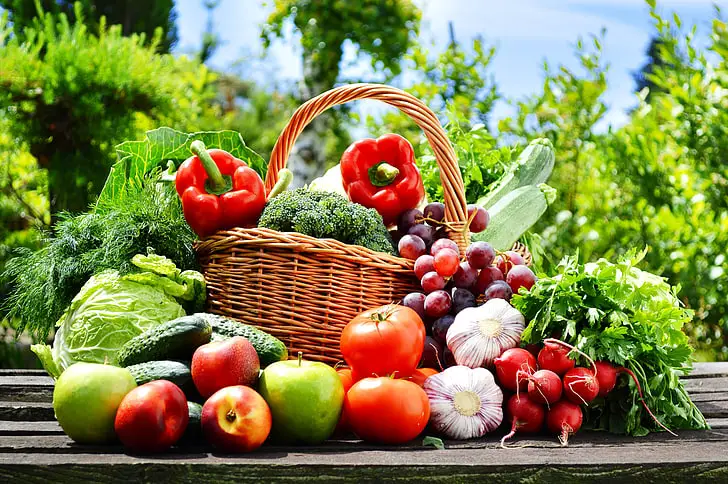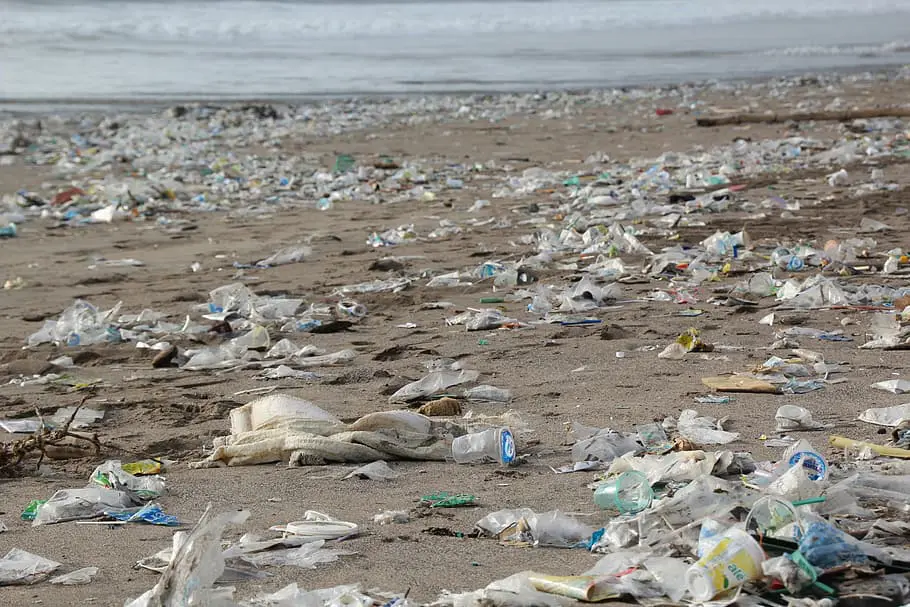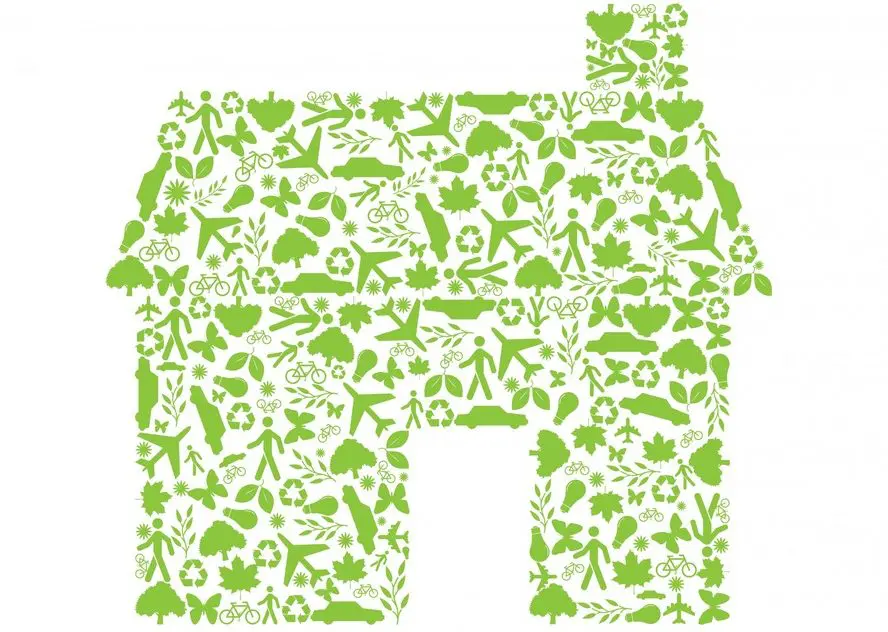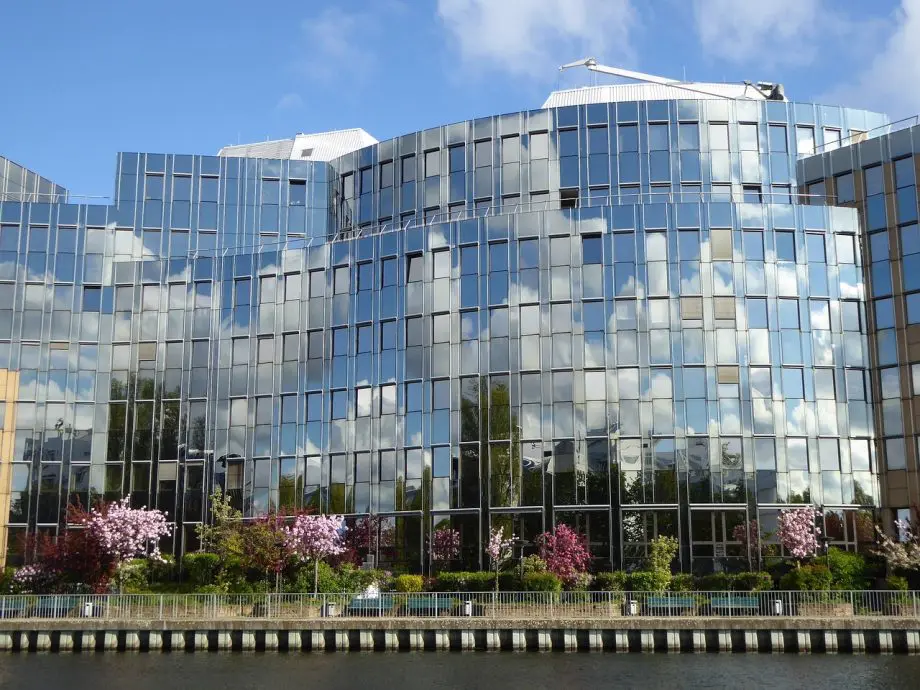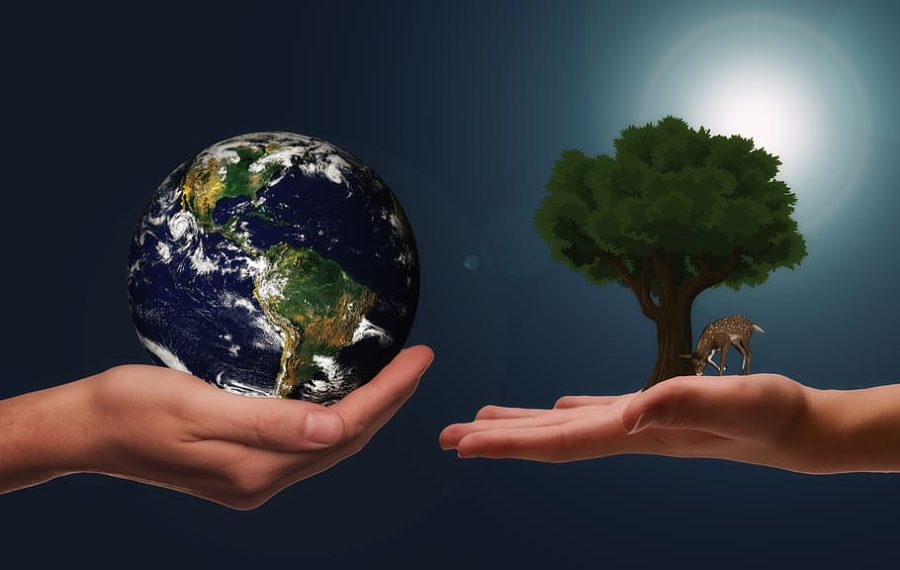
Why is sustainable living important? It’s the key to a greener future, better health, and a happier planet. Join us to learn more!
Why is sustainable living important, you ask? It’s more than just a trendy buzzword; it’s a heartfelt call to action for all of us.
Imagine a world where our daily choices lead to cleaner air, healthier ecosystems, and a brighter future for the next generation.
From the food we eat to the energy we use, sustainable living is our chance to make a real difference.
It’s not just about us; it’s about our planet, our community, and the legacy we leave behind. Join us as we explore this vital path to a better tomorrow!
Why is sustainable living important?
Why is sustainable living important? It’s a question that’s on many minds these days and for good reason.
In a world where resources are finite and the environment is under constant pressure, sustainable living offers a path to balance and harmony.
It’s not just about recycling or conserving water; it’s a holistic approach that touches every aspect of our lives.
From embracing renewable energy to reducing food waste, from supporting local farmers to making conscious decisions at the grocery store, sustainable living is about making choices that benefit both us and the planet.
In this post, we’ll delve into these topics and more, exploring how each of us can contribute to a more sustainable future. Let’s get started!
Definition of Sustainable Living
Sustainable living is a concept that goes beyond just recycling or turning off the lights when you leave a room.
It’s a way of life that encourages us to live in harmony with our environment.
It’s about making choices that minimize our impact on the Earth and promote the well-being of all its inhabitants.
From choosing eco-friendly products to reducing energy consumption, from supporting local businesses to embracing a plant-based diet, sustainable living is about recognizing our role in the global ecosystem and acting responsibly.
It’s a journey toward a more mindful and conscious way of life, where every decision counts.
Importance of Sustainable Living in Modern Times
In today’s fast-paced world, where consumerism is rampant and natural resources are dwindling, the importance of sustainable living has never been more pronounced.
It’s not just an ethical choice; it’s a necessity for the survival of our planet.
Climate change, deforestation, air and water pollution, these are not distant problems; they are realities that affect us all.
Sustainable living offers a way to combat these challenges. By adopting sustainable practices, we can reduce our carbon footprint, conserve natural resources, and create a more equitable society.
It’s about recognizing that our actions today have a lasting impact on the future and taking steps to ensure that the legacy we leave behind is one of stewardship and care.
Whether it’s a small action like using reusable bags or a significant lifestyle change like reducing meat consumption, every effort matters.
Sustainable living is our path to a healthier, happier, and more harmonious world. It’s not just the right thing to do; it’s the smart thing to do.
Renewable Energy
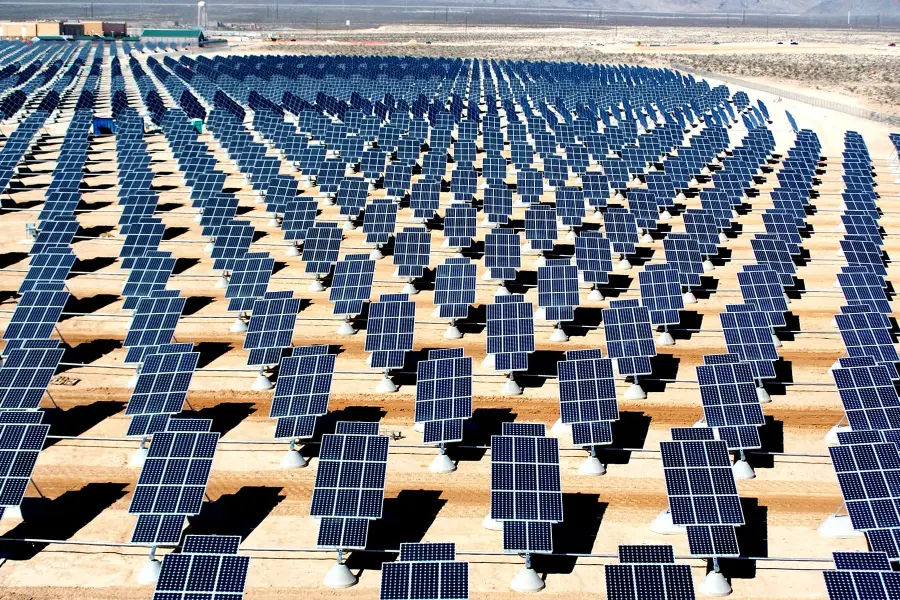
Renewable energy, now that’s a term we’re hearing more and more these days! But what does it really mean, and why is it becoming such a hot topic?
Well, renewable energy is like a breath of fresh air in our energy landscape. It’s all about harnessing the natural forces around us, like the sun’s rays, the wind’s power, or the Earth’s warmth, and turning them into energy we can use.
No need for fossil fuels, no harmful emissions, just clean, green energy. It’s a game-changer in our fight against climate change and a key player in our journey toward a more sustainable lifestyle.
So, buckle up, as we dive into the world of renewable energy and explore how it’s shaping our future!
Renewable energy is more than a buzzword; it’s a pathway to a more sustainable lifestyle and a vital tool in reducing our carbon footprint.
Imagine harnessing the sun’s rays through solar panels or capturing the wind’s power to light up our homes without relying on fossil fuels.
It’s an exciting shift towards energy efficiency and a great way to combat greenhouse gas emissions.
Renewable energy sources are not just about environmental protection; they’re about quality of life and making positive changes for our planet.
So, let’s explore this fascinating world of clean energy and discover how it’s shaping our way of life!
Importance of Renewable Energy
Renewable energy is like a beacon of hope in our fight against climate change.
Unlike fossil fuels, which release harmful carbon emissions and contribute to global warming, renewable energy sources are clean and green.
They’re a crucial part of reducing our carbon footprint and moving towards a more sustainable lifestyle.
In a world where natural resources are dwindling, renewable energy offers an alternative that’s not only environmentally friendly but also sustainable in the long run.
It’s a vital step towards a future where energy consumption aligns with environmental protection and the well-being of our planet.
Types of Renewable Energy
Solar: Have you ever thought about how powerful the sun is? Solar energy harnesses the sun’s rays through solar panels, converting them into electricity.
It’s an incredible way to utilize a natural, abundant resource, and it’s a great way to reduce energy consumption and carbon emissions.
Wind: Wind energy is all about capturing the natural power of the wind. Wind turbines are like modern-day windmills, transforming the wind’s force into energy.
It’s a clean and effective way to generate power without relying on fossil fuels.
Geothermal: The Earth itself is a source of energy! Geothermal energy taps into the Earth’s natural heat, using it to generate electricity or heat buildings.
It’s a renewable source that doesn’t deplete and offers a sustainable way to meet our energy needs.
Benefits of Renewable Energy
The benefits of renewable energy go beyond just environmental impact. Sure, it’s a fantastic way to reduce greenhouse gas emissions and combat climate change, but there’s more to it.
Renewable energy sources like solar panels and wind turbines are often more cost-effective in the long run.
They can lead to lower energy bills and less reliance on traditional energy sources.
Plus, they promote energy independence, reducing our dependence on foreign oil and creating a more resilient energy infrastructure.
By embracing renewable energy, we’re not just making a positive change for the environment; we’re investing in a better quality of life and a brighter future for all.
So, whether it’s the sun shining down on us or the wind blowing through our hair, renewable energy is a small action with significant benefits.
It’s a pathway to less pollution, less waste, and a more sustainable way of life. It’s not just a choice; it’s a responsibility we all share.
Organic and Regenerative Farming
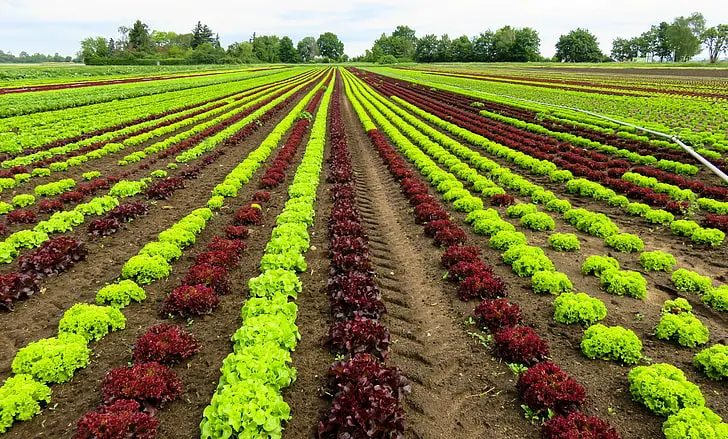
Organic and regenerative farming, now that’s a mouthful, isn’t it? But don’t let the terms intimidate you.
These farming practices are all about getting back to the roots (pun intended!) of agriculture.
Imagine farming that’s in tune with nature, where synthetic chemicals take a back seat, and natural processes lead the way.
It’s about nurturing the soil, promoting biodiversity, and growing food that’s not only delicious but also kind to the Earth.
Organic and regenerative farming is more than a trend; it’s a philosophy that embraces sustainability and respects the natural world.
So, grab your virtual hoe and shovel, and let’s dig into the fertile ground of organic and regenerative farming!
Definition and Importance
Organic and regenerative farming is like giving a loving hug to Mother Earth. It’s farming that says no to synthetic pesticides and fertilizers and yes to natural processes.
Organic farming focuses on growing food without harmful chemicals, while regenerative farming takes it a step further, aiming to restore and rejuvenate the soil itself.
It’s about creating a harmonious balance with nature, where the soil is nourished, and the ecosystem thrives.
In a world where industrial farming often depletes the soil and harms the environment, organic and regenerative farming is a vital step toward sustainability and environmental protection.
Impact on Biodiversity
Biodiversity is like the colorful tapestry of life, and organic and regenerative farming is a way to keep that tapestry vibrant and intact.
By avoiding synthetic chemicals and embracing natural methods, these farming practices support a rich ecosystem.
From the tiniest microorganisms in the soil to the birds in the sky, organic farming nurtures all forms of life.
It’s a way to protect our planet’s biodiversity and ensure a balanced natural environment.
It’s not just about growing food; it’s about cultivating a thriving, diverse ecosystem that benefits us all.
Benefits of Organic Farming
The benefits of organic farming extend beyond the farm itself. Sure, it’s about growing food that’s free from toxic chemicals, but it’s also about a broader impact on our health and the planet.
Organic food often tastes better and contains more nutrients, making it a healthy choice for our bodies.
It supports farmers who are committed to sustainable practices, reducing water pollution, and soil degradation.
By choosing organic, we’re not just making a choice for our health; we’re making a conscious decision to support a way of farming that respects the Earth and promotes a more sustainable lifestyle.
It’s a small change with big benefits, and it’s a delicious way to make a positive difference.
So, whether it’s biting into a juicy organic apple or savoring a meal made with locally-sourced ingredients, organic and regenerative farming is a pathway to a more sustainable way of life.
It’s a celebration of nature’s bounty and a commitment to nurturing the Earth.
It’s not just farming; it’s a philosophy that connects us to the land and to each other.
It’s a journey towards a future where food is grown with love, care, and respect for the natural world.
Plant-rich Diets

Plant-rich diets, now there’s a delicious way to make a difference! Have you ever considered how the food on your plate impacts the world around you?
A plant-rich diet is more than just a feast for your taste buds; it’s a conscious choice to embrace foods that are kinder to the Earth.
It’s about reducing meat consumption, savoring the flavors of fresh vegetables and fruits, and nourishing your body with nature’s best.
But it’s not just about what you eat; it’s about the positive changes you can make for the environment and your health.
So, grab your fork and get ready to dig into the vibrant world of plant-rich diets.
It’s a tasty journey towards a more sustainable lifestyle, and it starts with a single bite!
Importance of Plant-based Diets
Plant-based diets are like a symphony of flavors and colors, but they’re also a powerful tool for sustainability.
By shifting our focus from meat to plants, we’re embracing a way of eating that’s not only delicious but also gentle on the Earth.
It’s a way to reduce our carbon footprint, conserve water, and support ethical farming practices.
A plant-based diet is more than a dietary choice; it’s a lifestyle change that aligns with our values and our desire to live in harmony with the planet.
It’s a small step towards a more sustainable lifestyle, and it’s a journey filled with taste and joy.
Environmental Impact
The environmental impact of a plant-rich diet is like a breath of fresh air for the Earth.
Did you know that meat production is one of the leading causes of greenhouse gas emissions and deforestation?
By choosing more plant-based foods, we’re reducing the demand for meat and, in turn, lessening our environmental impact.
It’s a way to conserve natural resources, reduce water pollution, and promote a more sustainable way of farming.
A plant-rich diet is not just a choice for our health; it’s a choice for the health of our planet.
It’s a delicious way to make positive changes and contribute to a greener future.
Health Benefits
The health benefits of a plant-rich diet are like a loving embrace for your body.
From vibrant vegetables to wholesome grains, plant-based foods are packed with nutrients that nourish and energize.
They’re often lower in saturated fats and cholesterol, promoting heart health and overall well-being.
A plant-rich diet can be a pathway to better health, support weight management, and reduce the risk of chronic diseases.
It’s not just about what you’re avoiding; it’s about what you’re embracing.
It’s a celebration of nature’s bounty and a way to feed your body with love and care.
It’s a tasty journey towards better health, and it’s a choice that benefits both you and the Earth.
So, whether it’s savoring a crisp salad or enjoying a hearty plant-based stew, a plant-rich diet is a flavorful adventure towards a more sustainable way of life.
It’s a choice that nourishes the body, respects the Earth, and delights the taste buds. It’s a way of eating that connects us to nature and to each other. It’s a delicious path to a brighter, healthier future, and it’s a journey that starts with a single, mindful bite.
Is Eating Meat Bad for the Environment?
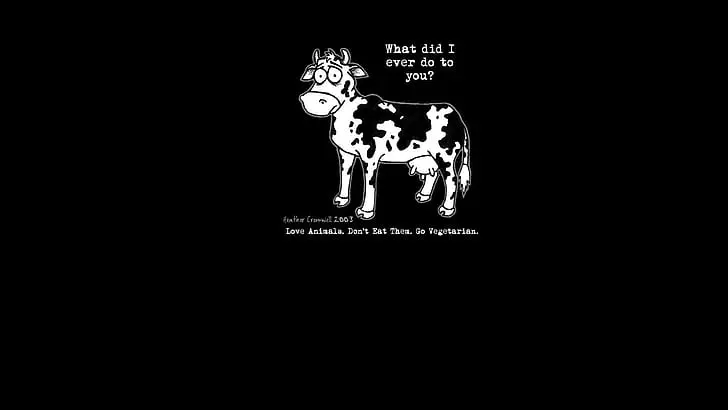
Let’s be honest. I enjoy a juicy burger and maybe you do too.
You do not need to become vegan but you should be aware of the impact your food choices have on the environment.
So consider shifting to a more plant-based diet and maybe try having a “Meatless Monday” for starters.
Eating meat has several environmental impacts that can be concerning. Let’s break it down:
Greenhouse Gas Emissions: Livestock farming is one of the significant contributors to greenhouse gas emissions, including methane, which is particularly potent.
Cows and other ruminants release methane during digestion, and this gas has a more substantial warming effect on the atmosphere than carbon dioxide.
Deforestation: To make room for grazing animals and to grow feed crops, vast areas of forests are cut down.
This deforestation not only destroys habitats for countless species but also reduces the Earth’s capacity to absorb carbon dioxide, further contributing to climate change.
Water Consumption: Meat production requires a substantial amount of water.
From growing feed crops to providing drinking water for animals and cleaning facilities, the water footprint of meat is significant. In some areas, this can contribute to water scarcity.
Water Pollution: Runoff from animal agriculture, including manure and fertilizers used on feed crops, can contaminate waterways.
This pollution can lead to harmful algal blooms and dead zones, where aquatic life cannot survive.
Land Use: Raising animals for meat requires a lot of land, both for grazing and for growing feed.
This land could often be used more efficiently to produce plant-based foods that feed more people with fewer resources.
Energy Consumption: Meat production is energy-intensive.
It requires more energy to raise, slaughter, and transport animals than to produce equivalent plant-based foods.
This increased energy use contributes to carbon emissions and other environmental issues.
Biodiversity Loss: The expansion of livestock farming and feed crop cultivation can lead to the loss of biodiversity, as natural habitats are destroyed or altered.
This loss of biodiversity weakens ecosystems and can have far-reaching impacts on the environment.
Overfishing: In the case of fish, overfishing is depleting fish stocks faster than they can replenish.
This disrupts marine ecosystems and threatens the balance of ocean life.
Ethical Considerations: Some also argue that the industrial farming of animals raises ethical concerns, including the treatment of animals and the use of antibiotics and hormones.
In conclusion, while meat can be a nutritious part of the diet, the environmental impacts of meat production are significant.
Reducing meat consumption and choosing sustainably-raised meat when we do consume it can be steps towards a more environmentally responsible diet.
It’s a complex issue, and individual choices can vary based on values, health needs, and personal preferences, but understanding the environmental impact of meat consumption is
Growing Your Own Food
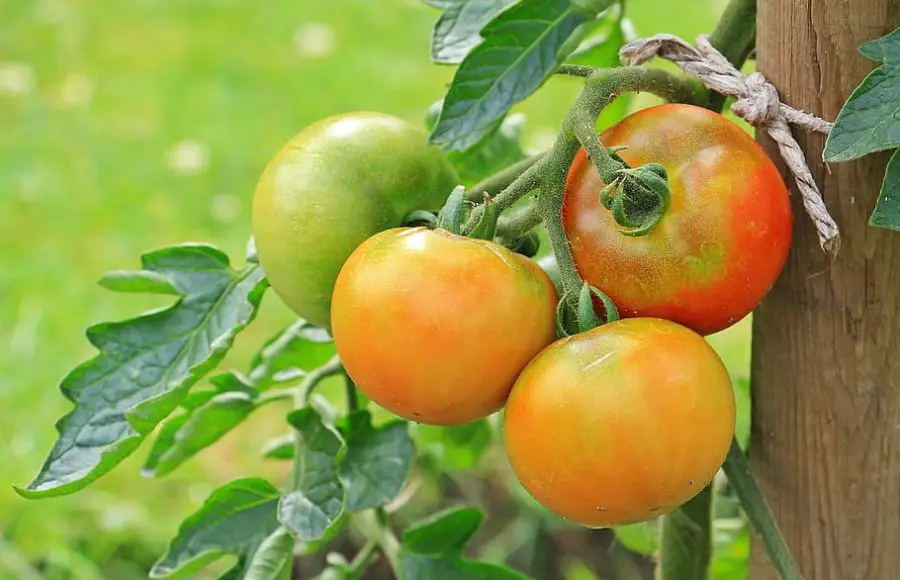
Growing your own food, now that’s a hands-on way to connect with what’s on your plate!
Imagine stepping into your garden and picking fresh tomatoes, and herbs, or even plucking an apple from your tree.
It’s not just about the unbeatable taste of homegrown produce; it’s about understanding where your food comes from and taking control of what you eat.
Growing your own food is like planting seeds of sustainability, nurturing them with love, and watching them blossom into something beautiful and nourishing.
Whether you have a sprawling garden or just a tiny windowsill herb box, growing your own food is a delightful journey towards a more sustainable lifestyle.
So, grab your gardening gloves, and let’s dig into the world of home gardening!
Benefits of Home Gardening
Home gardening is like having a little piece of nature right at your doorstep. But it’s more than just a pretty sight; it’s a pathway to numerous benefits:
Sustainability: Growing your own food reduces the need for transportation and packaging, cutting down on carbon emissions and waste. It’s a small step towards a more sustainable lifestyle.
Nutrition: There’s nothing like the taste of freshly picked produce! Homegrown fruits and vegetables often contain more nutrients, as they’re harvested at their peak ripeness.
Connection to Nature: Tending to a garden connects you with the Earth, allowing you to understand the natural cycles and the effort that goes into growing food. It’s a grounding and rewarding experience.
Mental Well-being: Believe it or not, gardening can be therapeutic! The act of planting, nurturing, and harvesting can be a calming and fulfilling experience.
Economic Savings: Growing your own food can save money in the long run. Seeds and plants are often cheaper than store-bought produce, especially if you’re growing organic.
Educational: For families, gardening can be an educational experience for children, teaching them about nature, responsibility, and the importance of healthy eating.
Urban Farming Efforts

Urban farming is like a green oasis in the concrete jungle. It’s about transforming city spaces, whether it’s a rooftop, balcony, or community garden, into productive green areas. Here’s why urban farming is making waves:
Community Building: Urban farms often bring communities together. Neighbors collaborate, share resources, and enjoy the fruits (and vegetables) of their labor.
Environmental Impact: Urban farming helps in reducing the heat island effect in cities, absorbing carbon dioxide, and providing oxygen. It’s a way to make cities greener and more sustainable.
Accessibility: Urban farming makes fresh, local produce more accessible to city dwellers. It’s a way to promote healthy eating and sustainability in areas where fresh food might be scarce.
Innovation: Urban farming often involves innovative techniques like vertical farming, hydroponics, and aquaponics. It’s a blend of tradition and technology, creating exciting opportunities for sustainable agriculture.
So, whether you’re planting herbs on your windowsill or joining a community garden, growing your own food is a delightful journey toward sustainability.
It’s a way to nourish your body and soul, connect with nature, and make positive changes in your community.
It’s a celebration of life, growth, and the simple joys of digging in the dirt. It’s a taste of the good life, right in your backyard!
Food Waste
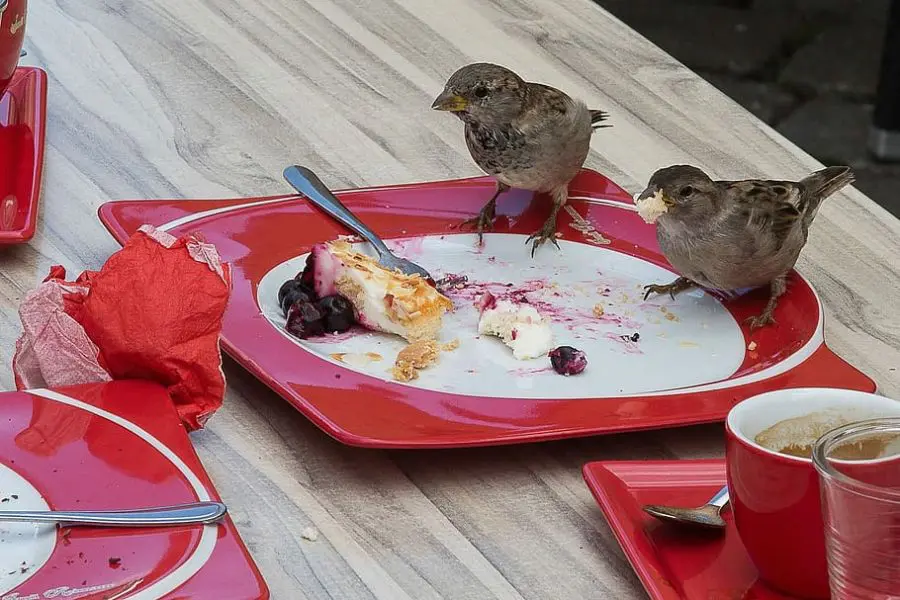
Food waste, it’s something we’ve all been guilty of at some point, right? That wilted lettuce at the back of the fridge or the leftovers we meant to eat but forgot.
But did you know that food waste is more than just a missed meal? It’s a global issue that affects our environment, economy, and even our values.
When we waste food, we’re not just wasting what’s on our plate; we’re wasting the resources, energy, and love that went into growing, transporting, and preparing that food.
Tackling food waste isn’t about guilt; it’s about awareness, action, and embracing a more mindful way of eating.
So, grab your reusable containers, and let’s dive into the world of food waste. It’s a journey towards a more sustainable lifestyle, one bite at a time!
The Problem with Food Waste
Food waste is like a leaky faucet in our global food system, and it’s dripping away precious resources:
Environmental Impact: When we waste food, we’re also wasting the water, energy, and land that went into producing it. Plus, food that ends up in landfills releases methane, a potent greenhouse gas.
Economic Loss: Food waste isn’t just a drain on natural resources; it’s a drain on our wallets too. From farmers to consumers, food waste represents a significant economic loss.
Moral Considerations: In a world where millions face hunger, wasting food can feel like a moral misstep. It’s a stark reminder of the imbalance in our global food distribution.
Wasted Opportunities: Think of the delicious meals that could have been made with the food that’s wasted! It’s a missed opportunity to nourish ourselves and our loved ones.
When I was a kid my parents would always say ”Eat your food people in India are starving” Like a smartass I would say so mail this to them.
But now that I am older and hopefully wiser I understand food waste is a real problem.
Solutions and Actions
The good news is, tackling food waste is something we can all do, and it starts right in our kitchens:
Mindful Shopping: Buy only what you need and have a plan for using it. It’s a simple step that can make a big difference.
Proper Storage: Storing food correctly can extend its life and reduce waste. From using airtight containers to understanding expiration dates, a little knowledge goes a long way.
Embrace Leftovers: Leftovers are like culinary treasures waiting to be rediscovered. Get creative with recipes and turn yesterday’s meal into today’s feast.
Composting: If food does go bad, composting is a way to return it to the Earth rather than sending it to a landfill. It’s nature’s way of recycling!
Community Efforts: From food banks to community fridges, there are many ways to share excess food with those who need it. It’s a way to turn potential waste into a gift of nourishment.
Educate and Advocate: Spread the word about food waste and support policies that promote sustainability. Together, we can make a difference.
So, whether it’s savoring leftovers or shopping with a list, tackling food waste is a journey towards a more mindful and sustainable way of eating.
It’s about valuing food, not just as fuel but as a precious resource that connects us to the Earth and to each other.
It’s a path towards a more sustainable lifestyle, filled with flavor, creativity, and care.
It’s a way to nourish our bodies, our communities, and our planet, one mindful bite at a time!
Reducing Individual Modes of Transportation

Reducing individual modes of transportation, now that’s a journey worth taking! Have you ever considered how your daily commute impacts the world around you?
Whether it’s the car you drive to work or the flights you take for vacations, transportation plays a significant role in our carbon footprint.
But here’s the exciting part: we have the power to make positive changes!
From cycling to work to embracing public transportation, reducing individual modes of transportation is about exploring new paths and finding joy in the journey.
It’s about connecting with our communities, enjoying the scenery, and moving towards a more sustainable way of life.
So, grab your bike helmet or your bus pass, and let’s embark on the road to sustainable transportation.
It’s a ride filled with possibilities, and it starts with a single step!
Sustainable Transportation Options
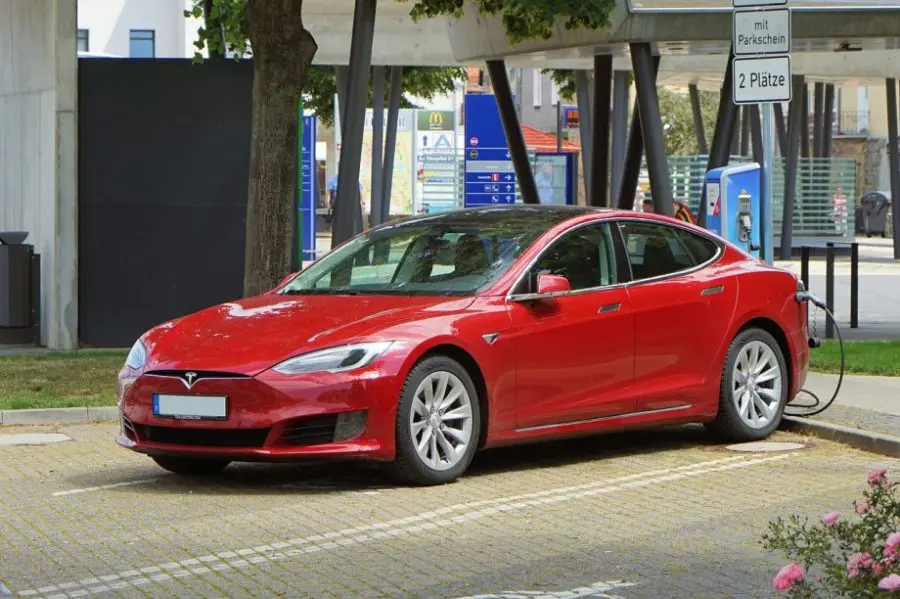
Sustainable transportation is like a smorgasbord of choices, each offering a unique way to get where you’re going while being kind to the planet:
Cycling: It’s not just a workout; it’s a way to commute! Cycling is a zero-emission mode of transportation that’s good for your health and the environment.
Public Transportation: Buses, trains, and trams offer an efficient way to travel, reducing the number of individual cars on the road and cutting down on emissions.
Walking: Sometimes, the simplest option is the best. Walking is a natural, healthy, and completely green way to get around.
Carpooling: Sharing rides with friends or coworkers can reduce the number of cars on the road, saving fuel and reducing emissions.
Electric and Hybrid Vehicles: If you need a car, consider electric or hybrid options. They’re a step towards reducing fossil fuel consumption and lowering carbon emissions.
Bike-Sharing and Ride-Sharing: Many cities offer bike-sharing programs, and ride-sharing apps can help you find eco-friendly rides.
Benefits of Cycling and Public Transportation

Cycling and public transportation are like the dynamic duo of sustainable travel, and here’s why they shine:
Environmental Impact: Both cycling and public transportation reduce greenhouse gas emissions, air pollution, and dependence on fossil fuels. They’re a breath of fresh air for our planet!
Health Benefits: Cycling is a great way to stay fit, and walking to and from public transportation can add some extra steps to your day. It’s a way to weave wellness into your daily routine.
Economic Savings: Say goodbye to fuel costs and parking fees! Cycling and public transportation are often more affordable options, leaving more money in your pocket.
Community Connection: Public transportation and cycling paths often lead to more interactions with neighbors and fellow commuters. It’s a way to connect with your community and enjoy the journey.
Traffic Reduction: More cyclists and public transportation users mean fewer cars on the road. It’s a way to reduce traffic congestion and make our cities more livable.
So, whether you’re pedaling to work or hopping on the bus, reducing individual modes of transportation is a journey filled with opportunities.
It’s a way to explore your city, connect with your community, and make positive changes for the environment.
It’s a path towards a more sustainable lifestyle, filled with fresh air, new friends, and the simple joy of moving through the world in harmony with nature.
It’s a ride towards a brighter future, and it’s a journey that starts with you!
Sustainable Building Models
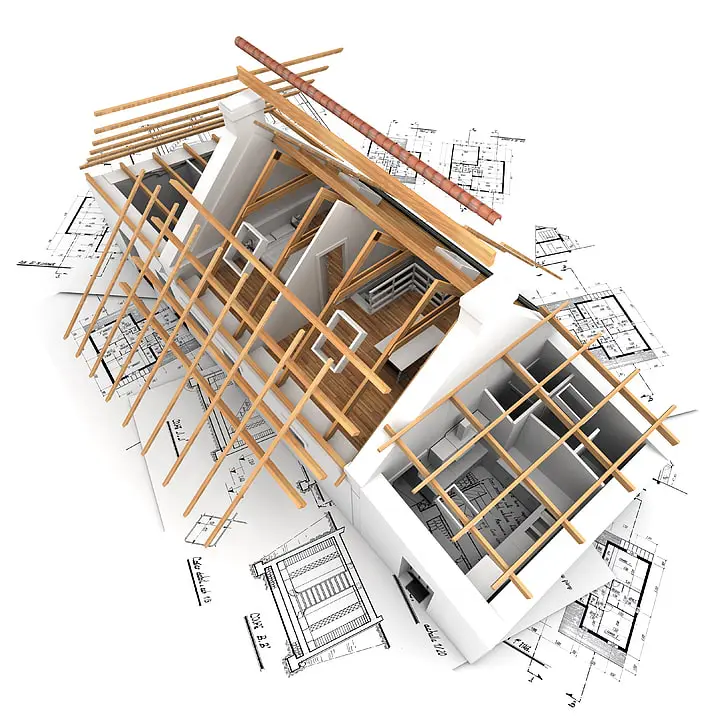
Sustainable building models, now that’s where innovation meets inspiration! Imagine living or working in a space that’s not just beautiful but also kind to the Earth.
A building that harnesses the power of the sun, breathes with natural ventilation and stands as a testament to human creativity and environmental stewardship.
Sustainable building models are about reimagining the way we design, construct, and inhabit our spaces.
It’s about blending form and function with sustainability and responsibility.
From green roofs to energy-efficient windows, sustainable building is an exciting frontier in the journey towards a more eco-friendly world.
So, grab your hard hat, and let’s explore the world of sustainable building models. It’s architecture with a heart, and it’s building a better future, one brick at a time!
Importance of Sustainable Building Materials
Sustainable building materials are like the unsung heroes of green architecture. They’re the foundation of a sustainable future, and here’s why they matter:
Environmental Impact: Using sustainable materials means reducing waste, conserving natural resources, and minimizing pollution. It’s about building with a conscience.
Energy Efficiency: Materials like insulated concrete, energy-efficient windows, and cool roofing can reduce energy consumption, lowering bills and reducing carbon emissions.
Durability: Sustainable materials often last longer and require less maintenance. It’s a win-win for both homeowners and the planet.
Health Benefits: Many sustainable materials are non-toxic and promote better indoor air quality. It’s a way to create spaces that nurture well-being.
Economic Sense: While some sustainable materials may cost more upfront, their durability and energy efficiency often lead to long-term savings.
Innovation: The demand for sustainable materials is driving innovation in the construction industry, leading to exciting new products and solutions.
Green Building Designs
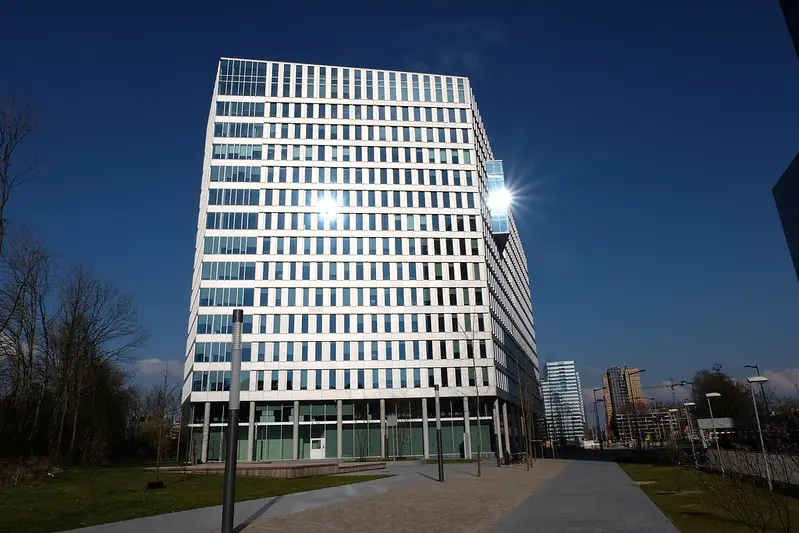
Green building designs are like a symphony of sustainability, where every element works in harmony with nature:
Solar Power Integration: From solar panels to solar water heaters, harnessing the sun’s energy is a cornerstone of green building.
Water Conservation: Green designs often include rainwater harvesting, greywater recycling, and water-efficient fixtures, reducing water consumption and waste.
Natural Ventilation and Lighting: By maximizing natural light and airflow, green buildings can reduce the need for artificial lighting and air conditioning.
Green Roofs and Gardens: Green roofs not only look beautiful but also provide insulation and absorb rainwater. They’re like a breath of fresh air in urban landscapes.
Smart Technology: Smart thermostats, lighting controls, and energy-efficient appliances can make a building more responsive to its occupants’ needs while conserving energy.
Sustainable Landscaping: Using native plants and sustainable gardening practices can create outdoor spaces that are beautiful and eco-friendly.
Certifications and Standards: Green building certifications like LEED provide guidelines and recognition for sustainable construction practices.
So, whether it’s choosing bamboo flooring or installing a green roof, sustainable building models are a journey towards a more harmonious relationship with our planet.
It’s about creating spaces that nurture, inspire, and tread lightly on the Earth.
It’s architecture with a soul, design with a purpose, and construction with a conscience.
It’s a path towards a more sustainable lifestyle, filled with innovation, beauty, and respect for the natural world.
It’s building not just for today but for generations to come. It’s a blueprint for a better future, and it’s a journey that starts with a single, sustainable brick!
Self-sufficiency, now there’s a concept that resonates with the heart and soul! Imagine having the ability to grow your own food, generate your own energy, and live in harmony with the land.
It’s not just a dream; it’s a way of life that’s both empowering and deeply connected to the Earth.
Self-sufficiency is about taking control of your destiny and reducing your reliance on external systems.
It’s about finding joy in simple living and discovering the satisfaction that comes from hands-on creativity.
From backyard gardens to off-grid living, self-sufficiency is a path toward independence, resilience, and a more sustainable lifestyle.
So, put on your gardening gloves or grab your toolbox, and let’s explore the world of self-sufficiency. It’s a journey of discovery, growth, and endless possibilities!
Definition and Spectrum
Self-sufficiency is like a garden, with different levels and paths to explore, all leading to a more independent and sustainable way of life:
Definition: Self-sufficiency means having the ability to provide for your own needs without relying heavily on external sources. It’s about empowerment, independence, and connection to the land.
Spectrum of Self-Sufficiency: From growing a few herbs on your windowsill to living entirely off the grid, self-sufficiency can be as simple or as comprehensive as you choose.
Partial Self-Sufficiency: This might include growing some of your own food, composting, or using solar panels to supplement your energy needs.
Full Self-Sufficiency: This level involves complete independence from external systems, including growing all your own food, generating all your energy, and managing waste sustainably.
Skills and Knowledge: Self-sufficiency often involves learning new skills, such as gardening, woodworking, or renewable energy management. It’s a lifelong learning journey.
Community and Collaboration: While self-sufficiency emphasizes independence, it also fosters community connections and collaboration. Sharing resources, knowledge, and support can enhance the journey.
Off-grid Living
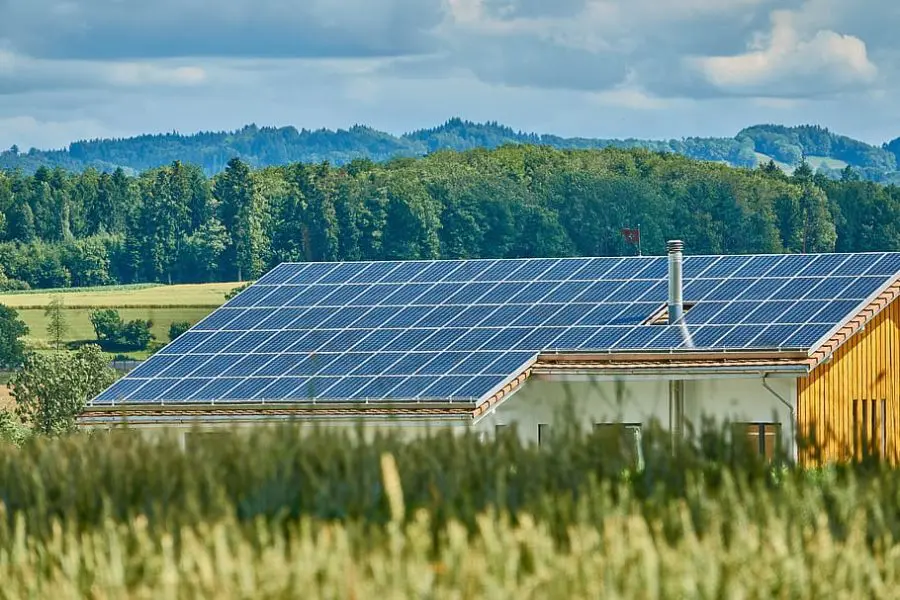
Off-grid living is like the summit of the self-sufficiency mountain, where you stand free and independent, fully connected to nature:
Definition: Living off-grid means disconnecting from public utilities and providing for all your needs independently. It’s about living in harmony with nature and embracing a simpler, more sustainable lifestyle.
Energy Independence: This often involves using renewable energy sources like solar, wind, or hydropower. It’s about harnessing nature’s abundance to power your life.
Water and Waste Management: Collecting rainwater, recycling greywater, and composting are essential aspects of off-grid living. It’s a closed-loop system that respects the Earth’s resources.
Food Production: Growing your own food, raising livestock, and preserving harvests are key to off-grid self-sufficiency. It’s a way to nourish your body and soul with the fruits of your labor.
Housing: Off-grid homes often incorporate sustainable building practices and designs that work with the local climate. It’s about creating a shelter that’s both functional and in tune with nature.
Challenges and Rewards: Off-grid living can be challenging, requiring dedication, creativity, and resilience. But the rewards are profound, including a deep connection to the land, a sense of accomplishment, and a life that aligns with your values.
So, whether you’re planting a vegetable garden or building an off-grid cabin, self-sufficiency is a journey toward empowerment, independence, and sustainability.
It’s a path that celebrates the human spirit, honors the Earth, and nurtures the soul.
It’s a way of life that’s both ancient and profoundly relevant in our modern world.
It’s a dance with nature, a song of freedom, and a step towards a more harmonious and sustainable future.
It’s a journey that starts with a seed, grows with love, and blossoms into a life filled with meaning and joy!
Why Is Sustainable Living Important? FAQs
FAQs, or Frequently Asked Questions, are like friendly guideposts on our journey toward understanding sustainable living.
They’re the questions that pop up in our minds as we explore new paths, the curiosities that spark our imagination, and the inquiries that lead us to deeper knowledge.
From What is Sustainable Living? to How Can I Reduce Food Waste?, FAQs are the stepping stones that help us navigate the exciting world of sustainability.
They’re the conversations we have with friends, the ponderings we share with family, and the reflections we explore within ourselves.
So, grab a cup of tea, settle into a comfy chair, and let’s dive into the FAQs of sustainable living. It’s a Q&A session filled with insights, wisdom, and the joy of discovery!
Q: What is Sustainable Living?
A: Sustainable living is all about making choices that minimize harm to the environment and promote a healthy, balanced lifestyle.
It involves reducing waste, conserving resources, embracing renewable energy, and making conscious decisions that align with the well-being of our planet.
It’s a way of life that seeks harmony with nature and strives to leave a positive impact for future generations.
Q: Why is Renewable Energy Important?
A: Renewable energy is vital because it provides a clean and sustainable alternative to fossil fuels.
Unlike coal, oil, or natural gas, renewable energy sources like solar, wind, and hydropower don’t deplete natural resources or emit harmful greenhouse gases.
By embracing renewable energy, we reduce our carbon footprint, combat climate change, and move towards a more sustainable and responsible energy future.
Q: How Can I Reduce Food Waste?
A: Reducing food waste is a journey that starts in your kitchen! Here’s how you can make a difference:
• Plan your meals and shop with a list to avoid buying more than you need.
• Store food properly to extend its shelf life.
• Embrace leftovers and get creative with recipes to use up what you have.
• Compost food scraps to turn waste into nourishing soil.
• Educate yourself and others about portion sizes and mindful eating.
By taking these small steps, you can reduce food waste, save money, and contribute to a more sustainable world.
Q: What are the Benefits of a Plant-rich Diet?
A: A plant-rich diet is like a feast for both your body and the planet! Here’s why it’s beneficial:
Environmental Impact: Plant-based foods often require fewer resources and produce fewer emissions than animal products. It’s a way to eat that’s kinder to the Earth.
Health Benefits: A diet rich in fruits, vegetables, grains, and legumes can provide essential nutrients, promote heart health, and support overall well-being.
Ethical Considerations: Choosing plant-based options can align with ethical beliefs regarding animal welfare and sustainable farming practices.
Culinary Adventure: Exploring plant-based cuisine can be a delicious adventure, filled with new flavors, textures, and culinary creativity.
By embracing a plant-rich diet, you nourish your body, delight your taste buds, and contribute to a more sustainable and compassionate world.
These FAQs are like a compass guiding us through the landscape of sustainable living.
They’re the questions that lead us to knowledge, the answers that inspire action, and the conversations that connect us to each other and the world around us.
It’s a dialogue filled with hope, curiosity, and the shared dream of a more sustainable future!
Why Is Sustainable Living Important? Conclusion
And here we are at the conclusion of our enlightening journey through the world of sustainable living.
It’s been a path filled with discovery, inspiration, and the shared dream of a better tomorrow.
From the sun-kissed rays of renewable energy to the nurturing embrace of organic farming, we’ve explored the many facets of a life in harmony with the Earth.
But the conclusion is not an end; it’s a beginning. It’s a call to action, an invitation to embrace the principles we’ve uncovered, and a challenge to make a difference in our own unique way.
So, let’s take a moment to reflect, celebrate the wisdom we’ve gained, and look forward to the positive changes we can make.
The future is bright, the possibilities are endless, and the path to sustainable living is a journey we can all embark on, hand in hand, heart to heart!
Summary of Key Points
We’ve journeyed through a landscape rich with ideas, insights, and inspiration:
Sustainable Living: We’ve defined what it means to live sustainably and explored the spectrum from small changes to off-grid living.
Renewable Energy: We’ve illuminated the importance of harnessing the sun, wind, and water to power our lives sustainably.
Organic Farming: We’ve dug into the soil of organic and regenerative farming, nurturing biodiversity and healthy ecosystems.
Plant-rich Diets: We’ve feasted on the benefits of plant-based eating, from environmental impact to health and well-being.
Growing Your Own Food: We’ve planted seeds of independence through home gardening and urban farming.
Food Waste: We’ve cooked up solutions to reduce waste and nourish our planet.
Sustainable Transportation: We’ve pedaled towards greener ways of getting around, from cycling to public transit.
Green Building: We’ve constructed visions of sustainable building, from materials to design.
Self-Sufficiency: We’ve crafted a life of empowerment, creativity, and connection to the land.
FAQs: We’ve answered the questions that guide us toward understanding and action.
Together, we’ve woven a tapestry of sustainable living, rich with knowledge, compassion, and hope.
Call to Action
Now, the journey is yours to continue. The path to sustainable living is open, inviting, and filled with possibilities:
Embrace the Journey: Start where you are, with what you have. Small steps can lead to big changes.
Learn and Grow: Continue to explore, ask questions, and seek knowledge. Sustainable living is a lifelong learning adventure.
Connect and Share: Join communities, share your experiences, and inspire others. Together, we can create a more sustainable world.
Live with Purpose: Align your actions with your values, and live a life that reflects your love for the Earth and all its inhabitants.
Be the Change: Remember, you have the power to make a difference. Your choices, your actions, and your voice matter.
So, take a deep breath, feel the wind in your hair, and step forward with joy and determination.
The path to sustainable living is a path of beauty, wisdom, and love.
It’s a path that’s waiting for you, filled with the promise of a brighter, kinder, more sustainable future.
It’s a journey of the heart, and it’s a journey that starts with you!




